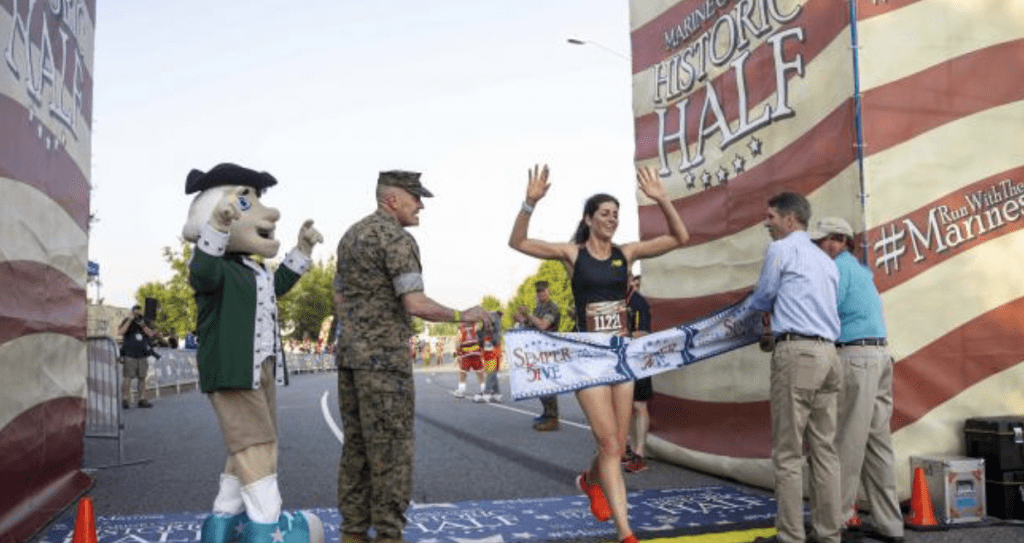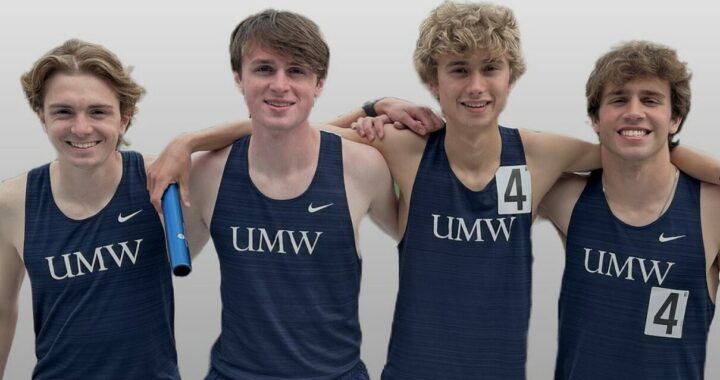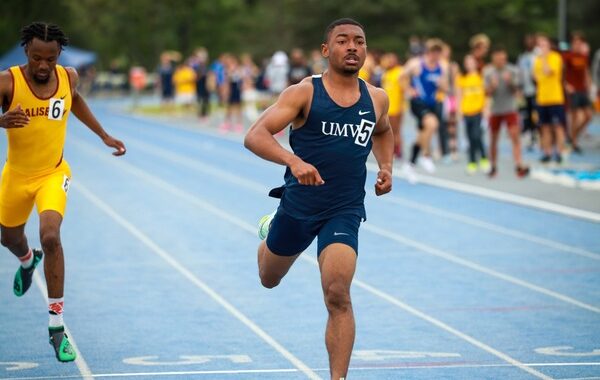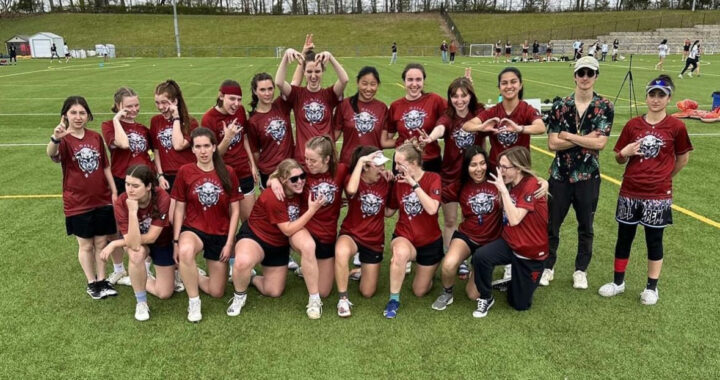Annual races go virtual
3 min read
The Marine Corps Half Marathon event has been forced to alter their plans, and move to a virtual platform. (www.marinemarathon.com)
By: Kaitlyn O’Gorma
COVID-19 may have shut down all sporting events, but running events are still occurring– just virtually. While virtual races are in no way a new concept, they have been on a steady rise since the start of the pandemic. A lot of major races, including Fredericksburg’s annual Marine Corps Half Marathon event, have been forced to alter their plans and move to a virtual platform.
Fortunately, these virtual races operate almost identically to the way a traditional running event would operate, minus the flags, water stations and a cheering crowd at the finish line.
Participants register to run and event organizers will mail runners a shirt and a bib, as they would with a typical running event. Participants are tasked with taking their own times and they are able to begin the run whenever and wherever they want. Whenever the runner finishes, they upload their run time and the organization will mail out medals once all participants have uploaded their times. Virtual races allow runners to compete against themselves and against other runners all around the world.
A major part of racing that this platform lacks, is having competitors to push you along and the camaraderie after crossing the finish line.
For some, this might be a deal breaker. UMW’s head cross country coach, Kunle Lawson, sees every race as an opportunity to improve.
“I think the virtual races are a good idea, if only for the athletes to have the opportunity to compete,” said Lawson. “Unfortunately, the tactical nature of races will be lost when you have someone competing against themselves, so to speak. It’s not a deal breaker, but it does have a bit of an impact on the overall performance.”
Due to the stay-at-home order, the cross country team hasn’t been able to train together as they normally would, but Lawson has encouraged the team to do a time trial which will leverage into their summer training.
“We hadn’t framed it as a virtual race and maybe we should have, because you would think it would add an extra layer of competitiveness,” says Lawson. “I think any opportunity to compete, especially now, should be seen as a blessing rather than an obligation.”
Even though participating in virtual races is a great opportunity to see where runners are with time, the ultimate goal for UMW’s cross country team is to be able to get back and train together again.
“Being able to be together whether it is in training or competition builds camaraderie,” said Lawson. “It is those times we can look forward to and relish when we look back. I would think that most runners relish the opportunity to train with and compete against others to see the improvements they’ve made compared to themselves and with others.”
As of right now, Virginia is hoping to get back to normal by June 10, but that date is liable to be extended. If the fall season sports are impacted and it comes down to finding alternative solutions, could virtual races be cross country’s saving grace?
Lawson does not see virtual races as a likely long term solution but he does have other ideas in mind.
“There isn’t a way to manage races and monitor performances for accuracy and since all cross country courses are the same and vary in length, managing competition would be challenging, if not impossible together,” says Lawson. “It would be interesting, however, to see if races could be staggered so that races could be run, but complying with any social distancing orders if they are still in place.”
While the virtual racing concept might not need to be adopted as a solution to save the fall season, it’s still a fun way to compete, train and maintain run times while waiting for the social distancing order to be lifted.











